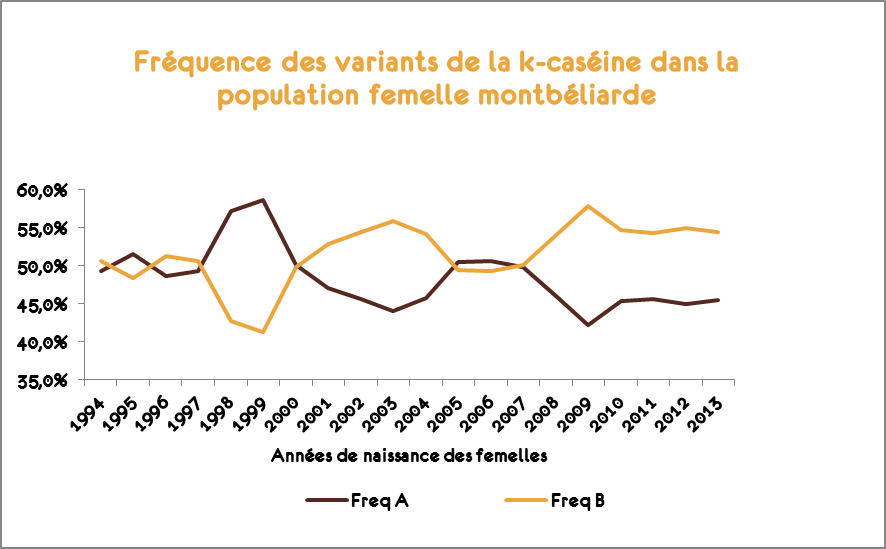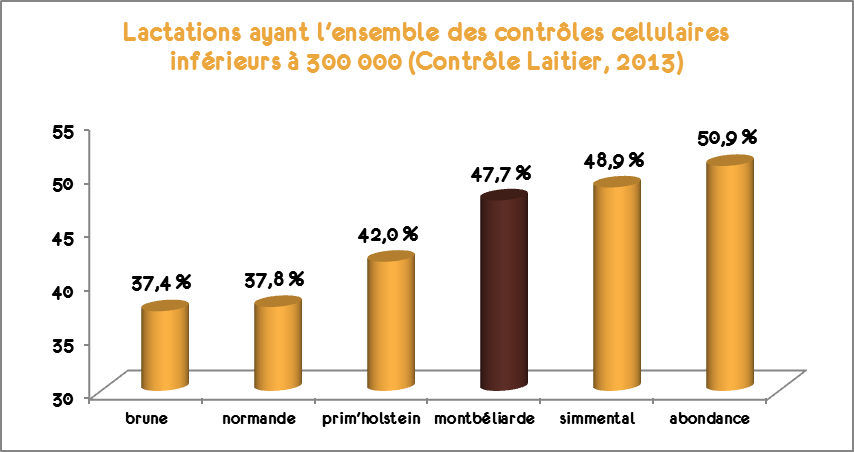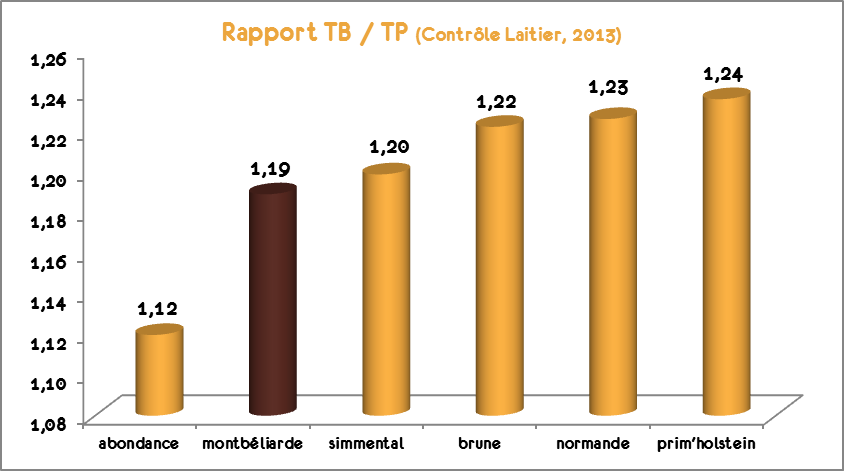The cheese makers keep a close eye on the cheese making ability of the milk. This ability depends on several criteria, among which the coagulation capacity which is influenced by genetic variants of milk proteins, somatic cells count, and the ratio fat/protein content… So many advantages contained in the Montbeliarde’s udder!
The Montbeliarde is :
More productivity thanks to the Kappa-casein B
Cheese making yield is all about coagulation. If the protein level improves it and makes a more homogeneous structure, more melting and less crumbly, it is the fat level which is dominating. The serum proteins (other proteins) do not clot and are evacuated in the serum. The Montbeliarde milk has good coagulation properties thanks to a higher Kappa-casein B synthesis rate and better calcium levels. Macheboeuf (INRA-1993) demonstrates an improved yield of 2.2% in Montbeliarde milk compared to Black and White cows’ milk.

The « variant B » frequency is a majority in the female Montbeliarde population, around 55%.
Reference: Montbeliarde OS, 2014 – Survey conducted on 651.573 females from their fathers’ and grandfathers’ genotypes.
Healthier milk, more receptive to yeast
The breed’s excellent resistance to mastitis and its low cell count levels are another chance for transformation. « The increase of somatic cells causes a poorer casein secretion and higher serum proteins content, therefore a declining level of performance » Jean-Marie Ducret indicates, from the Comté Cheese Technical Center (CTFC). The loss of balance in the casein/ soluble proteins ration leads to a decreasing firmness and resiliency of the texture. « Cells are white cells. They create a lower responsiveness of yeast due to their inhibition capacity of bacteria and rind issues because they form clusters. »

Somatic cells counts cause a decreasing cheese yield and cause imperfections in the rind forming.
A fat/protein content ratio fit for the cheese quality
In the cheese technology domain, the Montbeliarde present a « balanced » milk with a fat/protein content ratio of 1.19. The theories indicate an optimum between 1.15 and 1.20. This ratio has consequences on the draining level, the « fat/dry » relation which determines the appearance, the salt dose and the aromas development. When it is slow, cheeses are drier with crumbly texture; taste and preservation are altered. Otherwise, the draining is slower, the texture is too fat and the rind is not as good-looking. J-M Ducret confirms: « Increase the fat content improves the yield but is not always a good thing for the final product’s quality ». In some PDOs, the technical specifications have precise minimum and maximum levels of « fat/dry ». « In Comté, cheese makers sometimes skimmed in order to respect a dry extract fatty substance level lower than 54%. » In Reblochon, the best yield for one liter of milk is obtained with a fat/protein content ratio of 1.18.

In cheese making, the best concerning the fat/protein content ratio is between 1.15 and 1.20.